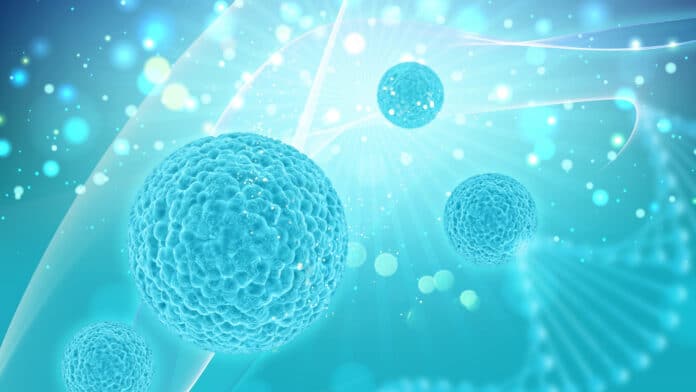Short-lived proteins regulate gene expression in cells to carry out various crucial functions. These proteins are created in the nucleus and, after performing their function, are promptly eliminated.
Despite their significance, scientists have spent decades figuring out how these proteins are degraded and eliminated from cells when they are no longer required.
Scientists from Harvard Medical School identified a protein that plays a crucial role in degrading many short-lived nuclear proteins. The protein, called midnolin, directly grabs the proteins and pulls them into the cellular waste-disposal system, called the proteasome, where they are destroyed.
Scientists have known their proteins for a long, but they have yet to learn how they are degraded. Scientists may target the process to manipulate protein levels to alter these processes and rectify any dysfunction because the proteins broken down by this process affect genes with critical functions connected to the brain, the immune system, and development.
Co-lead author Christopher Nardone, a PhD candidate in genetics at HMS, said, “The mechanism we found is very simple and quite elegant. It is a basic science discovery, but there are many implications for the future.”
Cells break down the proteins by tagging them with a small molecule called ubiquitin. The proteasome degrades the proteins after receiving a signal from the tag that they are no longer required. However, the proteasome can occasionally degrade proteins without the aid of ubiquitin tags, which led scientists to hypothesize the existence of an additional, ubiquitin-free method of protein destruction.
Nardone said, “There has been sporadic evidence in the literature that somehow the proteasome can directly degrade unmarked proteins, but no one understood how that can happen.”
Stimuli-induced transcription factors, which are proteins generated quickly in response to biological stimuli and go to the nucleus of a cell to turn on genes before being quickly eliminated, are one class of proteins that appear to be degraded by an alternate process. These proteins are extremely unstable and have a very short half-life — once they are produced, they carry out their function and are quickly degraded afterward.
These transcription factors support a range of critical biological processes in the body, yet even after decades of research, the mechanism of their turnover was largely unknown.
The team started by looking at two well-known transcription factors: Fos, which the Greenberg lab has extensively researched for its function in learning and memory, and EGR1, which is essential in cell division and survival. The scientists zeroed down on mandolin as a protein that aids in breaking both transcription factors using advanced protein and genetic analysis created in the Elledge lab. Follow-up studies showed that mandolin might be involved in the cleavage of hundreds of other transcription factors in the nucleus, in addition to Fos and EGR1.
Gu and Nardone determined they needed to understand precisely how mandolin targets and destroys such a wide range of proteins to corroborate their findings.
Nardone said, “Once we identified all these proteins, there were many puzzling questions about how the mandolin mechanism works.”
The team was able to fill in the specifics of the mechanism with the help of a machine learning program called AlphaFold that predicts protein structures and the outcomes of several lab experiments. They discovered that mandolin possesses a “Catch domain”—a portion of the protein that seizes and feeds other proteins directly into the proteasome, where they are digested. Midnolin can capture a wide range of proteins because of the Catch domain, which comprises two distinct areas connected by amino acids (like mittens on a string) and is designed to grab a rather unstructured portion of a protein.
Notable are proteins like Fos that activate genes that cause brain cells to reorganize and rewire themselves in response to inputs. Other proteins, such as IRF4, turn on genes that help the immune system by enabling cells to produce healthy B and T cells.
Stephen Elledge, the Gregor Mendel Professor of Genetics and Medicine at HMS, said, “The most exciting aspect of this study is that we now understand a new general, ubiquitination-independent mechanism that degrades proteins.”
The scientists say their finding has tantalizing translational potential. It may offer a pathway that researchers can harness to control levels of transcription factors, thus modulating gene expression and, in turn, associated processes in the body.
Journal Reference:
- Xin Gu, Christopher Nardone, et al. The mandolin-proteasome pathway catches proteins for ubiquitination-independent degradation. Science. DOI: 10.1126/science.adh5021
